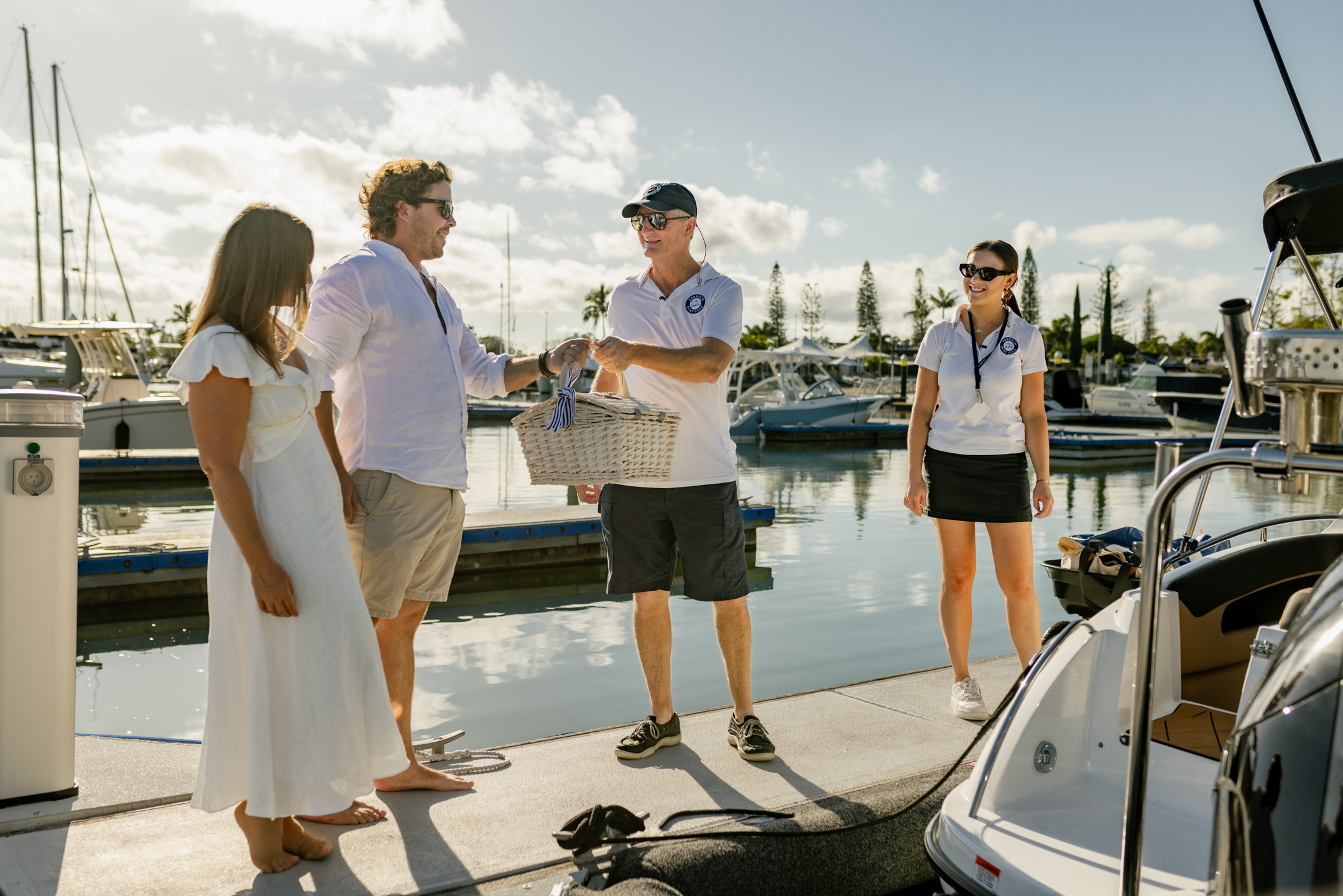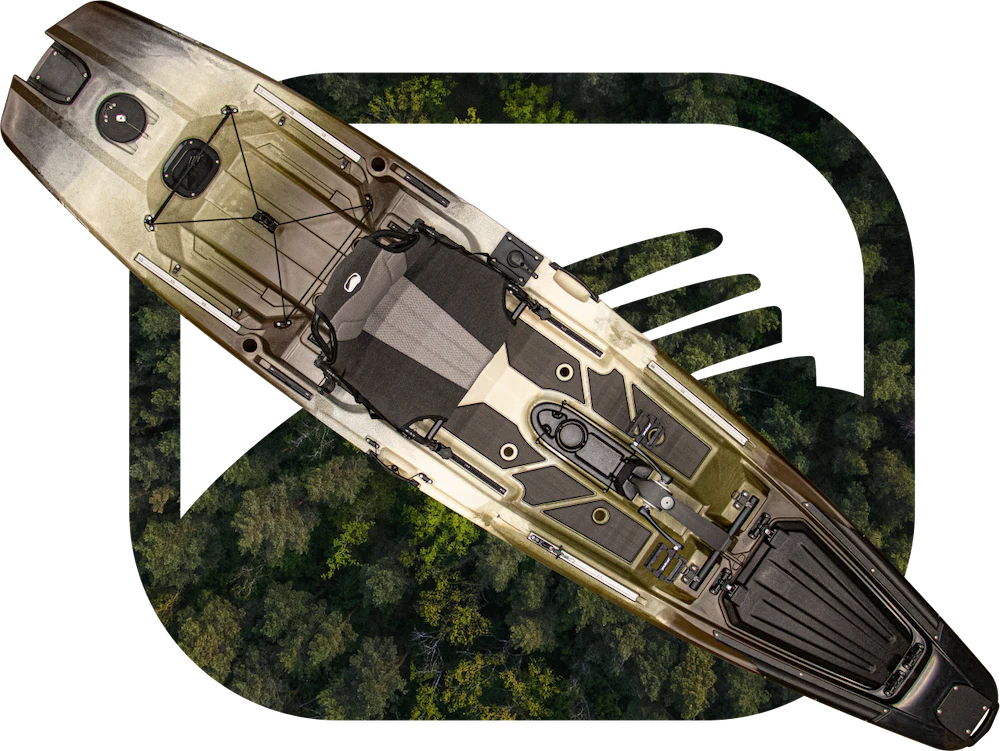Largest Port in India: Comprehensive Overview and Economic Impact
India's maritime sector is an essential component of its economy, accounting for over 90% of the country's trade by volume and around 70% by value. Maritime transportation plays a critical role in international trade, particularly in a country like India where shipping infrastructure is vital for the export and import of goods. The continuous growth and development of the nation's ports are integral to its overall economic progress, and as such, identifying the largest port in India holds significant value.
Among the 13 major ports in India, the largest in terms of traffic and cargo handling is the Jawaharlal Nehru Port Trust (JNPT), also known as Nhava Sheva, located near Mumbai on the west coast. It has rapidly grown since its inauguration in 1989, and today, it is responsible for approximately half of India's containerized cargo traffic. JNPT plays a crucial role in the economic development of the country, enabling efficient trade and contributing to the ease of doing business in India.
Key Takeaways
- India's largest port, JNPT, handles around half of the nation's containerized cargo traffic.
- The growth and development of Indian ports have a significant impact on the country's economic progress.
- Efficient maritime infrastructure contributes to the ease of doing business and trade in India.
Overview of Indian Ports
India has a vast coastline spanning more than 7,500 km, with numerous ports situated along its shores. These ports are critical for the country's trade and economic development. They are classified into two categories: Major Ports and Intermediate and Minor Ports. This section provides an overview of these classifications, their locations, and their functions.
Major Ports
Major Ports in India are managed and administered by the central government. They are categorized as "major" based on their capacity, revenue generation, and handling of international trade. Currently, there are 12 Major Ports distributed across the coastline along the Bay of Bengal in the east and the Arabian Sea in the west. Some of these ports are:
- Kolkata Port: the oldest operating port in India, located in West Bengal.
- Mumbai Port: one of the largest and busiest ports, situated in Maharashtra.
- Chennai Port: a significant container port on the east coast in Tamil Nadu.
These ports serve as the key hubs for India's international trade, handling millions of tonnes of cargo each year. They have adapted to the changing demands of global trade, often incorporating modern facilities and advanced technology for greater efficiency.
Intermediate and Minor Ports
In contrast to major ports, Intermediate and Minor Ports are those under the jurisdiction of the respective State Governments. These ports primarily handle regional cargo, facilitate coastal shipping, and support local industries. However, they still play a vital role in the overall development of India's maritime sector.
Some of the notable intermediate and minor ports include:
- Paradip Port: located in Odisha on the Bay of Bengal coast.
- Kandla Port: situated in Gujarat along the Arabian Sea coast.
- Haldia Port: a minor port in West Bengal, supporting the operations of the Kolkata Port.
These ports have diverse functions and contribute to India's regional trade and development. Upgrading and expanding their infrastructure will generate more opportunities for domestic industry and enhance the nation's competitiveness in the global market.
In conclusion, Indian ports are essential components of the nation's economy and trade networks. They vary in size and function, with Major Ports focusing on international trade and larger cargo volumes, while Intermediate and Minor Ports cater to regional demands and support local industries. Both types of ports contribute significantly to the country's maritime sector and overall economic growth.
The Largest Ports in India
Jawaharlal Nehru Port Trust (JNPT)
Jawaharlal Nehru Port Trust, also known as Nhava Sheva, is the largest container port in India. Located in Maharashtra, JNPT handles around 56% of India's container traffic. The port's strategic location facilitates efficient transport of cargo through various sea routes, and it is well connected to hinterland regions through road and rail networks.
Mundra Port
Mundra Port, situated in Gujarat, is the second-largest port in India. With a capacity to handle over 4 million TEUs (twenty-foot equivalent units), the port has emerged as a strong competitor to JNPT. The Mundra Port serves as a vital connection to global shipping routes and provides world-class facilities for handling diverse cargo types such as containers, bulk, and liquid cargo.
Kandla Port
Kandla Port, also located in Gujarat, is one of the major ports on the west coast of India. It was established as a replacement for Karachi Port after India's partition. With direct access to the Arabian Sea, Kandla Port plays a crucial role in facilitating trade with the Middle East and Europe. The port is recognized for its ability to handle bulk cargo like grains, salt, and fertilizers.
Chennai Port
Chennai Port is the oldest artificial harbor on the east coast of India. Situated in the state of Tamil Nadu, it was the first modern major port in India. Chennai Port is crucial for the automotive industry, as it handles a significant share of the country's automobile exports. Additionally, the port manages various types of cargo, including containers, bulk, and liquid.
Kolkata Port
Kolkata Port, in West Bengal, is one of the oldest operating ports in India. It consists of two dock systems - Kolkata Dock System and Haldia Dock Complex. Despite facing challenges due to the shallow depth of the Hooghly River, which restricts larger vessels, Kolkata Port handles a diverse range of cargo like containers, coal, iron ore, and petroleum products.
In addition to these ports, other significant ports include Tuticorin Port, Visakhapatnam Port, and Paradip Port, contributing to India's growing maritime trade and global economic connectivity.
Key Infrastructure and Operations
Container Terminals
India's largest port, Jawaharlal Nehru Port Trust (JNPT), plays a crucial role in the nation's maritime trade. The port features state-of-the-art container terminals that enable seamless handling of containerized cargo. These terminals are equipped with modern berths, advanced ship-to-shore cranes, and robust container stacking yards, ensuring efficient operations. The container terminals handle various types of containers, such as refrigerated and specialized ones, catering to diverse shipping requirements.
Cargo Handling Facilities
JNPT's cargo handling facilities comprise jetties and dedicated berths for handling diverse types of cargo, including liquid, dry bulk, and breakbulk. The port's cargo handling facilities bolster its operational capacity, with specially designed equipment like conveyors, loaders, and unloaders. Moreover, the port employs barges to facilitate efficient movement of cargo between facilities.
Shipyard and Dry Docking
A shipyard and dry docking facility are critical to the maintenance and repair of vessels calling at the port. JNPT offers these services through various collaborations with private firms, ensuring that ships remain seaworthy and operational. The shipyard supports the construction, refurbishment, and repair of various types of vessels, including commercial and naval ships. The dry docking facility, on the other hand, provides essential maintenance services such as hull inspections and repairs.
Connectivity and Transportation
Efficient connectivity and transportation play a crucial role in the effective functioning of a major port like JNPT. The port is well-connected to the hinterland through a robust network of railways and highways, facilitating the seamless movement of cargo. In addition, India is investing in developing waterways, which help in the efficient transport of cargo through inland channels. These initiatives not only enhance the port's cargo handling capacity but also contribute to the overall growth and development of the region.
Economic Impact and Trade
Exports and Imports
India has a long history of trade across the seas and ports play a vital role in its economic growth. Seaports in India handle a significant amount of cargo, mainly due to the country's extensive coastline. The largest port in India, the Jawaharlal Nehru Port (also called Nhava Sheva), is a premier example, handling 90% of the total trade volume and 77% of the total trade value for the entire country.
The main commodities for exports and imports in India include:
- Exports: textiles, chemicals, petroleum products, engineering goods, and gems and jewelry
- Imports: crude oil, gold, electronic goods, chemicals, and fertilizers
Cargo Tonnage and Traffic
As of 2024, Jawaharlal Nehru Port is responsible for managing a significant portion of India's total container traffic. The port handles high volumes of both import and export cargoes, including both containerized and bulk shipments. The cargo tonnage for the port and its subsequent major ports, is depicted in the following table:
| Port | Cargo Tonnage (in millions) |
|---|---|
| Jawaharlal Nehru Port | XX |
| Chennai | YY |
| Visakhapatnam | ZZ |
In terms of container traffic, Jawaharlal Nehru Port is also at the forefront of India's maritime scene. It has been successful in handling increasing amounts of containerized cargo over the years, playing a crucial role in facilitating trade.
Contribution to National Economy
Ports in India have a substantial impact on the overall economy. A study on the role of ports in the development of a nation highlights their economic significance. Jawaharlal Nehru Port, in particular, has shown a continued contribution to India's economic output as one of the most prominent ports in the region.
Furthermore, the port has attracted significant investment that has led to its expansion and modernization. The development of the port has resulted in increased business activity and employment opportunities, directly improving the livelihoods of people living in the port's surrounding areas, and indirectly contributing to India's overall economic growth and stability.
In conclusion, the largest port in India - Jawaharlal Nehru Port, plays a significant role in facilitating trade, handling a high volume of cargo traffic, and supporting the nation's economy. The expansion and modernization of this port have only served to amplify these positive effects, further positioning India as a world leader in international trade.
Strategic Location and Advantages
India's maritime trade has greatly benefited from its location on the global map, with its ports strategically positioned near key international trade routes. In this section, we will discuss the proximity of India's largest port to these trade routes and how it brings advantages to various coastal states in India.
Proximity to International Trade Routes
India's coastal states such as Gujarat, Karnataka, Andhra Pradesh, Tamil Nadu, Kerala, Goa, Maharashtra, West Bengal, and Odisha are all home to major ports that facilitate international trade. Among these, the largest port is the Jawaharlal Nehru Port, also known as Nhava Sheva, located in Mumbai, Maharashtra.
The Jawaharlal Nehru Port's strategic location connects it to major trade routes between Asia, Europe, and Africa. The port's location on the west coast of India allows it to serve as a gateway to the Persian Gulf, the Suez Canal, and the east coast of Africa. This greatly benefits businesses in the coastal states of Gujarat, Maharashtra, and Goa as it shortens transit time and reduces transportation costs.
In contrast, ports located on the east coast of India, such as Chennai and Kolkata, have direct access to the Bay of Bengal and the Malacca Straits, allowing them to facilitate trade with Southeast Asia, Australia, and Japan. These ports benefit businesses in the coastal states of Andhra Pradesh, Tamil Nadu, West Bengal, and Odisha.
The strategic positioning of these ports enables India to take advantage of the following:
- Shorter transit times: The close proximity of India's ports to key international trade routes results in shorter transit times, which are crucial for the timely delivery of goods.
- Lower transportation costs: Due to shorter transit times, the transportation costs for businesses in the coastal states are significantly reduced.
- Access to a diverse range of markets: The strategic location of India's ports allows businesses to reach a variety of markets across the globe, thereby promoting trade diversification.
In conclusion, the strategic location of the largest port in India and its proximity to key international trade routes provide significant advantages to the coastal states. The benefits include shorter transit times, lower transportation costs, and diversified trade opportunities that strengthen India's position as a major player in global trade.
Commodities and Specializations of Ports
India's largest port, in terms of volume and cargo handled, plays a crucial role in the country's economy. This port is well-known for its ability to handle various types of commodities and specializes in specific cargo categories. In this section, we will discuss these specializations, focusing on oil and petroleum, container goods, and bulk commodities.
Oil and Petroleum
India is a significant importer of oil and petroleum products, with the largest port serving as a vital hub for these imports. The port's oil and petroleum infrastructure includes dedicated berths for the handling of crude oil, petroleum, and oils for various industries. Key oil imports include crude oil, lubricating oils, and chemicals. Additionally, the port handles petroleum exports, such as naphtha, diesel, and aviation turbine fuel. The port is strategically located near the country's major refineries, ensuring a smooth flow of these commodities.
Container Goods
The largest port in India specializes in the handling of containerized cargo. This includes essential goods such as textiles, pharmaceuticals, electronics, and machinery. A noteworthy mention is the export of tea and coffee which contributes to India's foreign exchange earnings. The port's container terminals are equipped with modern facilities, ensuring efficient handling of various container goods.
Bulk Commodities
India's largest port also plays a significant role in the trade of bulk commodities. The port's bulk cargo handling facilities include:
- Coal: The port imports coal, used as a fuel for electricity generation, and it acts as a primary gateway for coal supplies to various power plants within the country.
- Iron ore: The port exports iron ore, one of India's top exported commodities. Iron ore is used in steel production, and its exports contribute significantly to the country's economy.
- Fertilizers: The port handles both imported raw materials for fertilizer production, such as rock phosphate and urea, and the export of finished fertilizers products, including di-ammonium phosphate (DAP) and muriate of potash (MOP).
- Steel: The port's facilities are equipped to handle steel exports, such as hot and cold rolled coils, and other steel products.
To sum up, India's largest port is a central hub that handles various commodities across different sectors, such as oil and petroleum, container goods, and bulk commodities. This specialization facilitates the smooth flow of trade and ensures the optimal functioning of its regional and global supply chains.
Port Management and Governance
India's port management involves the cooperation of central and state governments, as well as private sector involvement. The regulatory framework is designed to ensure efficient operations and management.
Central Government Role
The central government plays a crucial role in managing and overseeing the major ports in India. The Ministry of Ports, Shipping, and Waterways is responsible for formulating policies and guidelines for the country's ports, including the development of port infrastructure and the promotion of related industries. It also monitors and coordinates the functioning of major ports, working to improve their efficiency and competitiveness in the global market.
State Governments
State governments are responsible for managing and regulating non-major ports (minor/intermediate ports) within their jurisdiction. These ports play a significant role in cargo handling and transportation, serving as crucial links in India's domestic and international trade. State governments work in alignment with the central government's policies to ensure the growth and development of minor ports.
Private Sector Involvement
Private entities, such as the Adani Group, have also played a crucial role in the port management in India. They work in partnership with the government to improve infrastructure, operations, and management of ports. The establishment of private ports and Special Economic Zones (SEZs) fosters healthy competition, which ultimately helps to drive growth and innovation in the port sector. The central and state governments often provide various incentives and supportive policies to encourage private investment in port management.
Regulatory Framework
To ensure efficient operations and management of ports, both major and non-major, the central and state governments have established a regulatory framework that includes laws, rules, and policies. This framework governs various aspects of port management such as safety, security, and environmental protection. It also aims to strengthen coordination among the different entities involved in port management, including the Ministry of Ports, state governments, and private players, to ensure the growth and development of India's port sector.
Future Developments and Projects
India's seaports play a crucial role in its economic growth and trade. To strengthen its position as a global player and improve its maritime infrastructure, several future developments and projects are being planned for the largest ports in the country.
Sagarmala Project
The Sagarmala Project is an ambitious initiative by the Government of India aimed at modernizing and enhancing the efficiency of the country's seaports. This project envisions a comprehensive upgrade of existing ports, establishment of new intermediate ports, and development of a dedicated railway line to facilitate smooth cargo movement.
Key components of the Sagarmala Project include:
- Port Modernization: Upgrading existing port infrastructure to increase their capacity and efficiency.
- Port Connectivity: Enhancing connectivity between major ports, industrial clusters, and hinterlands through road, rail, and inland waterways.
- Port-led Industrialization: Developing industrial clusters around ports with suitable infrastructure to boost exports.
- Coastal Community Development: Enhancing the socio-economic condition of coastal communities through skill development and employment generation.
Modernization and Expansion Plans
Apart from the Sagarmala Project, India has undertaken several modernization and expansion plans for its largest ports. These plans focus on adopting new technologies, optimizing current processes, and investing in sustainable port development. Some of the key aspects of these plans include:
- Automation: Implementing advanced technologies to automate processes like cargo handling, vessel management, and documentation.
- Green Ports: Promoting eco-friendly practices like renewable energy, waste management, and emission reduction.
- Public-Private Partnerships: Encouraging private sector participation in port development projects for funding, expertise, and operational management.
These future developments and projects aim to build on India's strengths in the maritime sector and enable the country to become a leading global player in the international shipping and trade businesses. By focusing on port modernization, connectivity, and sustainability, India's largest ports are set to witness significant growth and expansion in the coming years.
Environmental and Safety Considerations
Sustainable Practices
Many ports in India, such as Mangalore and Port Blair, have implemented sustainable practices to minimize the environmental impact of their operations. These practices include:
- Waste management: Proper disposal and recycling of waste materials generated during port activities.
- Marine emission control: Implementation of measures to reduce the release of pollutants from ships, such as adherence to International Maritime Organization (IMO) regulations.
- Biodiversity conservation: Measures to protect the flora and fauna around the port, including the monitoring of endangered species and habitats, such as the Nicobar Islands.
- Environmental monitoring: Regular monitoring of the air, water, and noise quality to ensure compliance with environmental standards and minimize negative impacts on surrounding communities.
Safety Measures
Ensuring the safety of port operations is a primary concern for Indian ports. Some key safety measures implemented at major ports like Mangalore and Port Blair include:
- Fire safety: Adequate fire-fighting equipment and facilities are installed throughout the port, with regular training sessions for staff to handle emergencies.
- Security: Implementation of strict security protocols, such as access control, perimeter fencing, and CCTV surveillance, to protect against unauthorized access and potential threats.
- Hazardous materials handling: Strict adherence to national and international guidelines for handling, storage, and transportation of hazardous materials to prevent accidents and environmental pollution.
- Emergency response: Establishment of emergency response teams and plans to address potential incidents, such as natural disasters, accidents, or security breaches, ensuring timely and effective response.
- Worker safety: Enforcement of safety regulations for workers, including personal protective equipment, training, and audits to maintain a safe working environment.
By implementing these sustainable practices and safety measures, Indian ports like Mangalore, Port Blair, and those in the Nicobar Islands are working to minimize negative impacts on both the environment and the individuals working within their territory.
Frequently Asked Questions
What is the name of the busiest port in India?
The busiest port in India is the Jawaharlal Nehru Port, also known as Nhava Sheva. It is located on the west coast of India near Mumbai and handles the largest volume of container traffic in the country.
Which port in India has the largest container handling capacity?
The port with the largest container handling capacity in India is also the Jawaharlal Nehru Port. It boasts state-of-the-art facilities to accommodate modern shipping vessels and manages a significant portion of India's container traffic.
Can you identify the third-largest port in India by cargo volume?
The third-largest port in India by cargo volume is Mundra Port, built on the west coast in the state of Gujarat. The port handles a wide range of cargo, including crude oil, coal, and automobile products.
What is the largest artificial port in India, and where is it located?
The largest artificial port in India is the Visakhapatnam Port, located on the east coast in the state of Andhra Pradesh. It is a crucial port for India's trade activities and serves as an important gateway for the country's eastern region.
How does Chennai rank among India's ports in terms of size?
Chennai Port, situated on the east coast of India in the state of Tamil Nadu, occupies the fourth rank among India's ports in terms of cargo handling capacity. As a major port in South India, Chennai plays a significant role in the regional and national economy.
Who is the major port authority or owner with the largest oversight in India?
In India, the Ministry of Ports, Shipping, and Waterways holds the responsibility of overseeing the country's major port authorities and their operations. The ministry formulates policies and strategies aimed at taking India's port sector to new heights and enhancing its competitiveness on a global level.
Charlie is Editor-in-Chief of Sea Magazine







